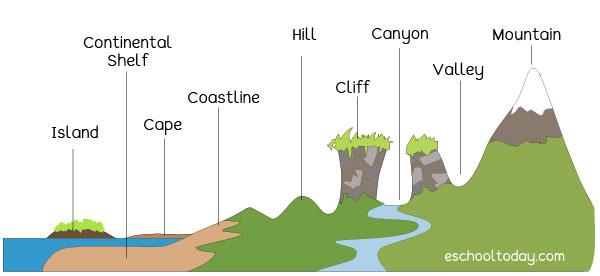- Landforms
What is a Landform?
A land is any part of the earth’s surface that is not covered by water. It covers about 30% of the earth’s surface.
A landform is simply any natural geographic feature that is on the earth’s surface, such as valleys, hills, mountains, and plateaux.

Landforms are all not the same. Some may be very high above sea level, and other parts may be deep below sea level. Some of them are composed of hard material, and others are composed of very soft material. Some landforms have vegetation on them, whiles some are void of any plant at all. Some are very large, and others are small. Most important of all, landforms are always changing because the factors that form them are in action every day!
Scientists who study how landforms are created together with their interactions with other natural things are called geologists.
Formation of landforms
Landforms are formed by factors from two main processes: Constructive and Destructive Processes. Landforms can be created within a short period, but some can take many decades to form. Some quick formation processes include landslides, volcanic eruptions, and earthquakes.

Constructive Processes
This process involves the building (addition of land material) of features either by natural action. The three main areas of constructive processes include Crustal Deformation, Volcanic Eruptions, and Sediment Deposition.
Destructive Processes
It involves the breakdown or tearing down of land surface to form new features. It can be seen as ‘carving out’ parts of the land to form new features.
Weathering and Erosions are the two main destructive forces that create and shape landforms.
Now we shall learn more about these processes before we dig into the various types of landforms.
